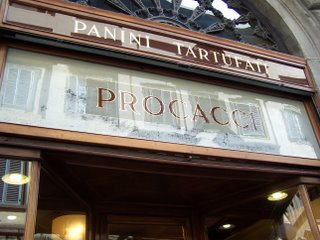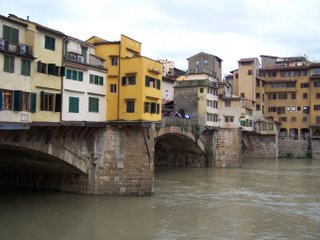 The Zen of Bread Baking – Yesterday Morning: I check in for a month’s worth of training in Classic European Breads at the French Culinary Institute in New York City. I am issued my uniform, apron and textbook, and meet my fellow students for the next four weeks. “A” is a baker from a cooperative in Mississippi. She has journeyed north on a fact finding mission as the co-op looks to expand their variety of fresh baked breads. She has long braids and a sunny disposition. “E” is a former computer consultant from Brooklyn. He is looking to gain some new skills and perhaps open a restaurant in the future. I’m a culinary enthusiast and, at the moment, a roving adventurer on leave from my day job. Consider us the Three Musketeers of the bread baking world. Although, perhaps not as swashbuckling.
The Zen of Bread Baking – Yesterday Morning: I check in for a month’s worth of training in Classic European Breads at the French Culinary Institute in New York City. I am issued my uniform, apron and textbook, and meet my fellow students for the next four weeks. “A” is a baker from a cooperative in Mississippi. She has journeyed north on a fact finding mission as the co-op looks to expand their variety of fresh baked breads. She has long braids and a sunny disposition. “E” is a former computer consultant from Brooklyn. He is looking to gain some new skills and perhaps open a restaurant in the future. I’m a culinary enthusiast and, at the moment, a roving adventurer on leave from my day job. Consider us the Three Musketeers of the bread baking world. Although, perhaps not as swashbuckling.“Chef” is an accomplished baker and educator, tranquil, whip smart, and a database of information on the techniques, ingredients, history and technology attached to bread. She walks us through the 13 steps of bread baking which are far more complex than most peoples’ typical, “go to store, purchase bread, and open twist tie.” It’s a little overwhelming, but the aroma of warm yeast and flour in the baking studio is intoxicating.
Then, she breaks the news to us. In addition to learning to bake French, German and Middle European breads, our “job” is to prepare the bread served at the school restaurant each day for lunch and dinner. I look at Chef skeptically.
“Are you sure we’ll be able to produce something edible?’ I ask.
Almost immediately, we dive head first into the rhythms of a professional bakery. We learn about yeast, flours and fermenting methods. We fold, we divide and we pre-shape. We take the dough’s temperature. We practice the motions of shaping bread dough, which is something like yoga with a purpose. And, perhaps most daunting of all – for anyone who grew up in the American school system – we learn how to measure ingredients on a balance scale with counter weights using the metric system.
Chef has zeroed in on the Zen of bread baking. She radiates calm as she manipulates unruly dough into perfectly shaped baguette loaves. She’s like a dancer, a sculptor and a chiropractor all rolled into one. I, on the other hand, am stilted, stiff, stressed out by the whole thing, and a little worried about those patrons who are probably scrutinizing the bread basket in the restaurant.
Oh ye of little faith. It’s a little like the miracle of the feeding of the five thousand. In the course of several hours, we manage to shape, bake and score nearly one hundred loaves. We even roll out bagel dough for use in a subsequent class. Surprisingly, the end results all look pretty respectable.
I stumble out of the studio at about 3 in the afternoon, covered with a thin dusting of King Arthur Flour.
Today: I wake up realizing that my hands are doing this little pantomime of shaping a baguette. I’m wondering if I will be able to look at another baguette, and in fact, we’ll be making three versions of them, using different methods of fermentation.
I’m starting to learn my way around the baking studio and get familiar with the tools and ingredients. The school stocks many varieties of flour, including white, whole wheat, rye and others. Chef walks us through the physical composition of the wheat berry and the protein content of various flours. Bread dough has a higher protein content, which develops better structure in the final loaf.
We weigh out ingredients for three different baguettes and dump the ingredients into massive mixers that look like computerized witches cauldrons. Large batches of dough are combined and left to rest.
Moving on to bagels, we first boil the doughnut shaped beauties and then coat them in poppy seeds, sesame seeds or salt. They are popped into the oven for a quick bake before we return to the baguette dough and start to shape. E seems to handle the dough a little too roughly, but he’s got four kids, so that’s understandable. A is finding that mental connection to the process. I notice that she’s even closing her eyes as she rhythmically massages each baguette into a long serpentine shape. I’m still finding the volume and time pressures a bit daunting, and feel a little like Lucy Ricardo in the chocolate factory.
We continue to practice our scoring, and quickly learn that a baker must have cut throat instincts. A baguette requires five deep slashes with a razor to allow the loaf to bake evenly and blossom into that distinctive diamond pattern on top.
Filling the oven is an intensely physical task, as we position the loaves on large metal racks with rolling canvas that slide the bread into the hot oven.
By late afternoon, we are sitting around the bench to analyze and taste our finished loaves. We finger the crust and smell the aroma of the inner crumb. Much like sampling wine, we taste the loaves and compare the different flavors from mild to tart to nutty to slightly sour. It’s all pretty gratifying and although I’m exhausted, I think I’m starting to find that elusive connection to the “bread zone.”
Back at home, I compose a dinner sandwich of ham, Danish blue cheese and apple, captured within a hearty slice of my crisp, honey gold baguette.
© 2006 T.W. Barritt All Rights Reserved


 The Cappella dei Principi is the mausoleum for the Medici family of Florence. Much of it is now supported with scaffolding, because the polished blue, green and gold marble had begun to fall from the walls. I accept the potential risk of a head injury and make a morning visit to the site, which is regal even with the scaffolding. Again, Florence’s finest Michelangelo is present with several sculptures that decorate the stone caskets of the family.
The Cappella dei Principi is the mausoleum for the Medici family of Florence. Much of it is now supported with scaffolding, because the polished blue, green and gold marble had begun to fall from the walls. I accept the potential risk of a head injury and make a morning visit to the site, which is regal even with the scaffolding. Again, Florence’s finest Michelangelo is present with several sculptures that decorate the stone caskets of the family. It is dark inside Santa Trinita as Florence begins another day. Only small votive candles illuminate the small chapels and frescos that grace the walls of the 11th century abbey. Outside, I can hear the buzz of motorbikes as the morning paces accelerates. But, inside Santa Trinita, I am blessed with a few moments of quiet reflection.
It is dark inside Santa Trinita as Florence begins another day. Only small votive candles illuminate the small chapels and frescos that grace the walls of the 11th century abbey. Outside, I can hear the buzz of motorbikes as the morning paces accelerates. But, inside Santa Trinita, I am blessed with a few moments of quiet reflection.

 I’m standing in the Piazza Della Signoria at 9:00 a.m. when the doors to the Pallazzo Vechhio swing open. This is the “Old Palace” built in 1322 which still serves as Florence’s town hall. It looks like a small fortress on the outside, but inside are palatial rooms decorated in grand style for Duke Cosimo I.
I’m standing in the Piazza Della Signoria at 9:00 a.m. when the doors to the Pallazzo Vechhio swing open. This is the “Old Palace” built in 1322 which still serves as Florence’s town hall. It looks like a small fortress on the outside, but inside are palatial rooms decorated in grand style for Duke Cosimo I. Day One in Florence is full of flavor – medieval prisons, Renaissance masters, domed cathedrals, sheltered cloisters, rustic pasta and the best ice cream in Italy.
Day One in Florence is full of flavor – medieval prisons, Renaissance masters, domed cathedrals, sheltered cloisters, rustic pasta and the best ice cream in Italy.





 There is a brisk breeze blowing through the streets of Florence and people are everywhere. I quickly scope out the Eastern part of the city in the late afternoon, and discover that there are medieval treasures around every corner. Just steps from the hotel is the Piazza della Signoria, where a copy of Michelangelo’s David stands, and the Loggia dei Lanzi built in 1382, which is an outdoor sculpture garden filled with classic Roman statues. I walk past the Duomo, the tallest structure in the city, where the sound of steeple bells ring through the piazza.
There is a brisk breeze blowing through the streets of Florence and people are everywhere. I quickly scope out the Eastern part of the city in the late afternoon, and discover that there are medieval treasures around every corner. Just steps from the hotel is the Piazza della Signoria, where a copy of Michelangelo’s David stands, and the Loggia dei Lanzi built in 1382, which is an outdoor sculpture garden filled with classic Roman statues. I walk past the Duomo, the tallest structure in the city, where the sound of steeple bells ring through the piazza.





